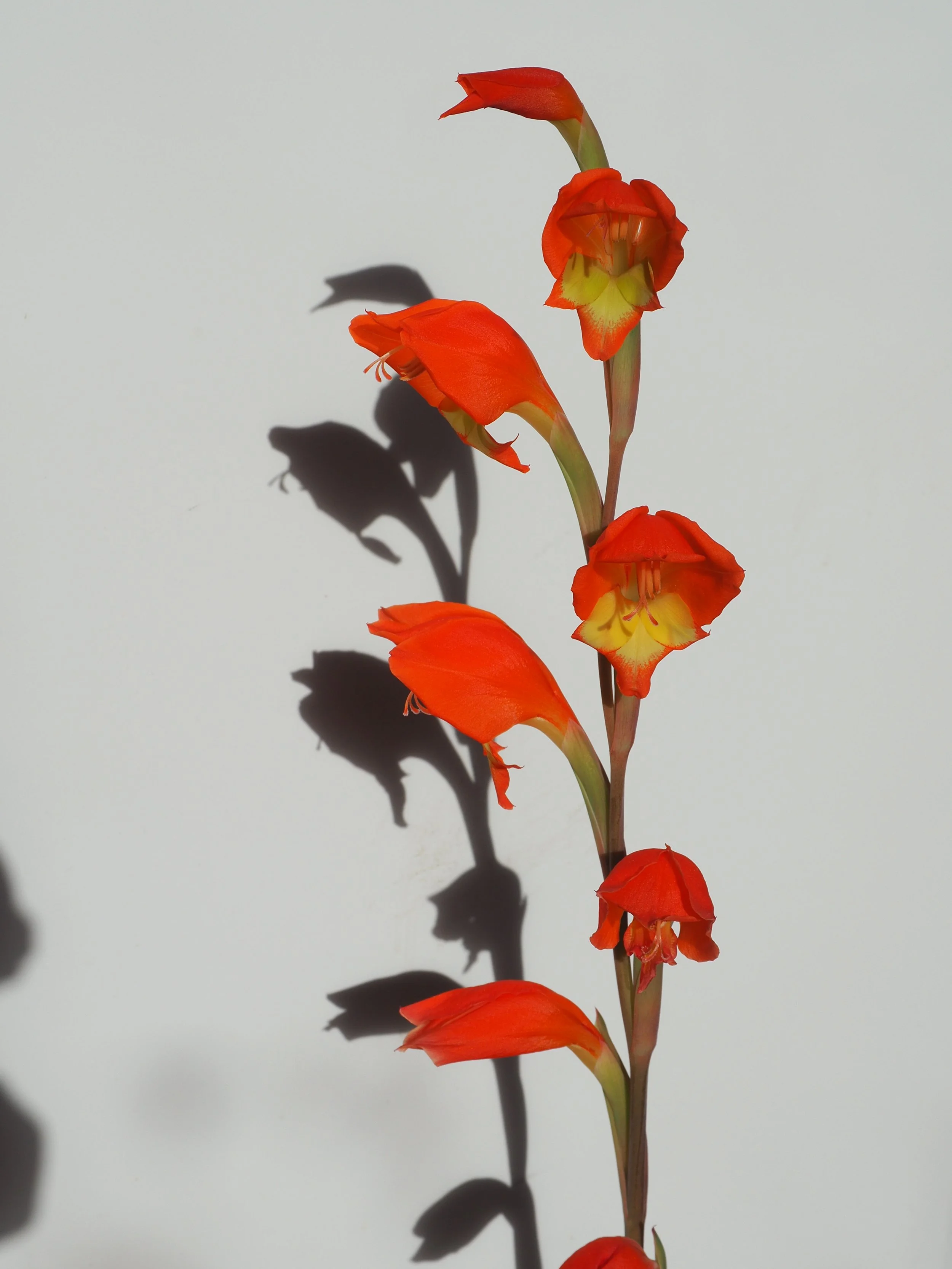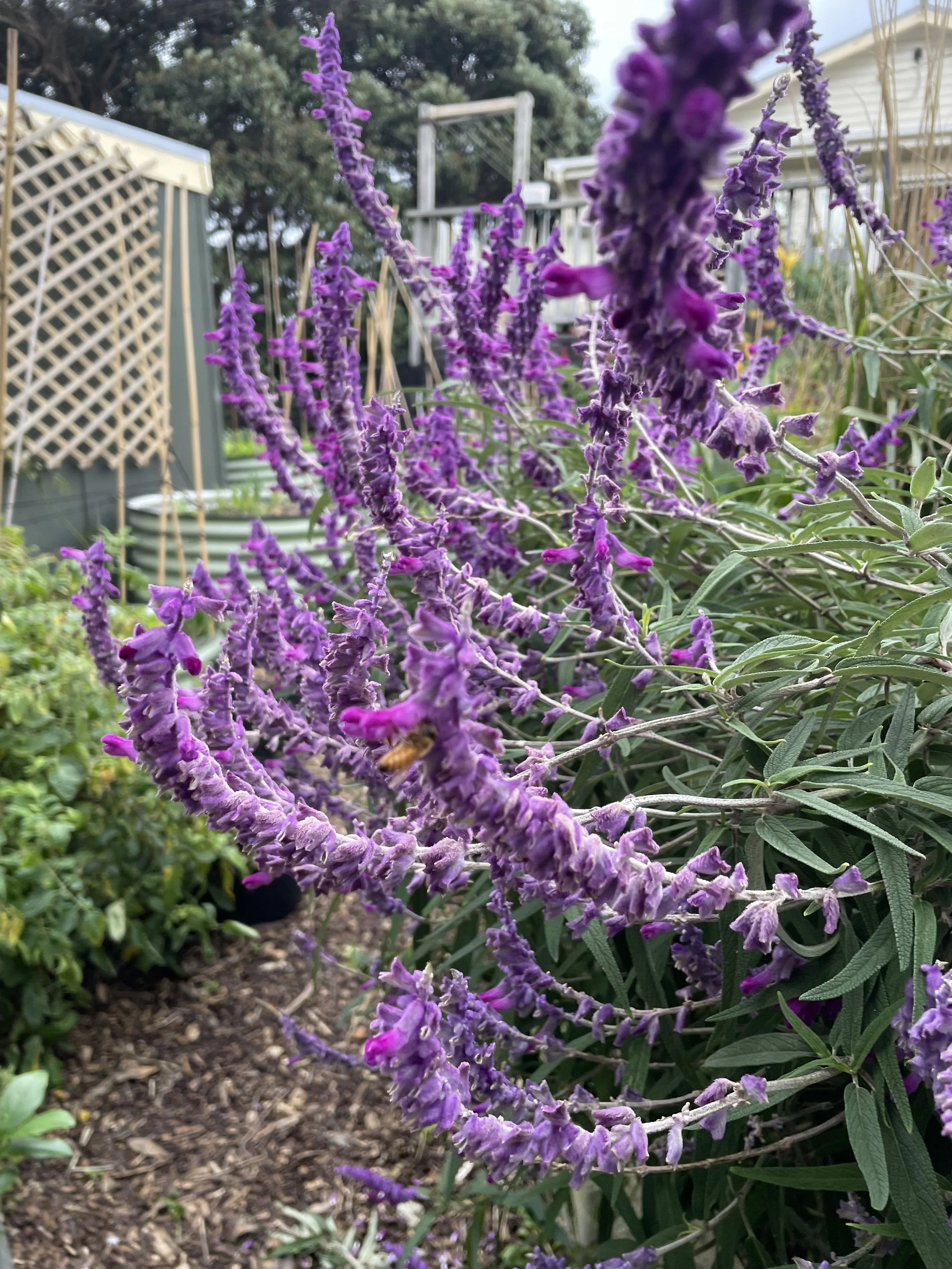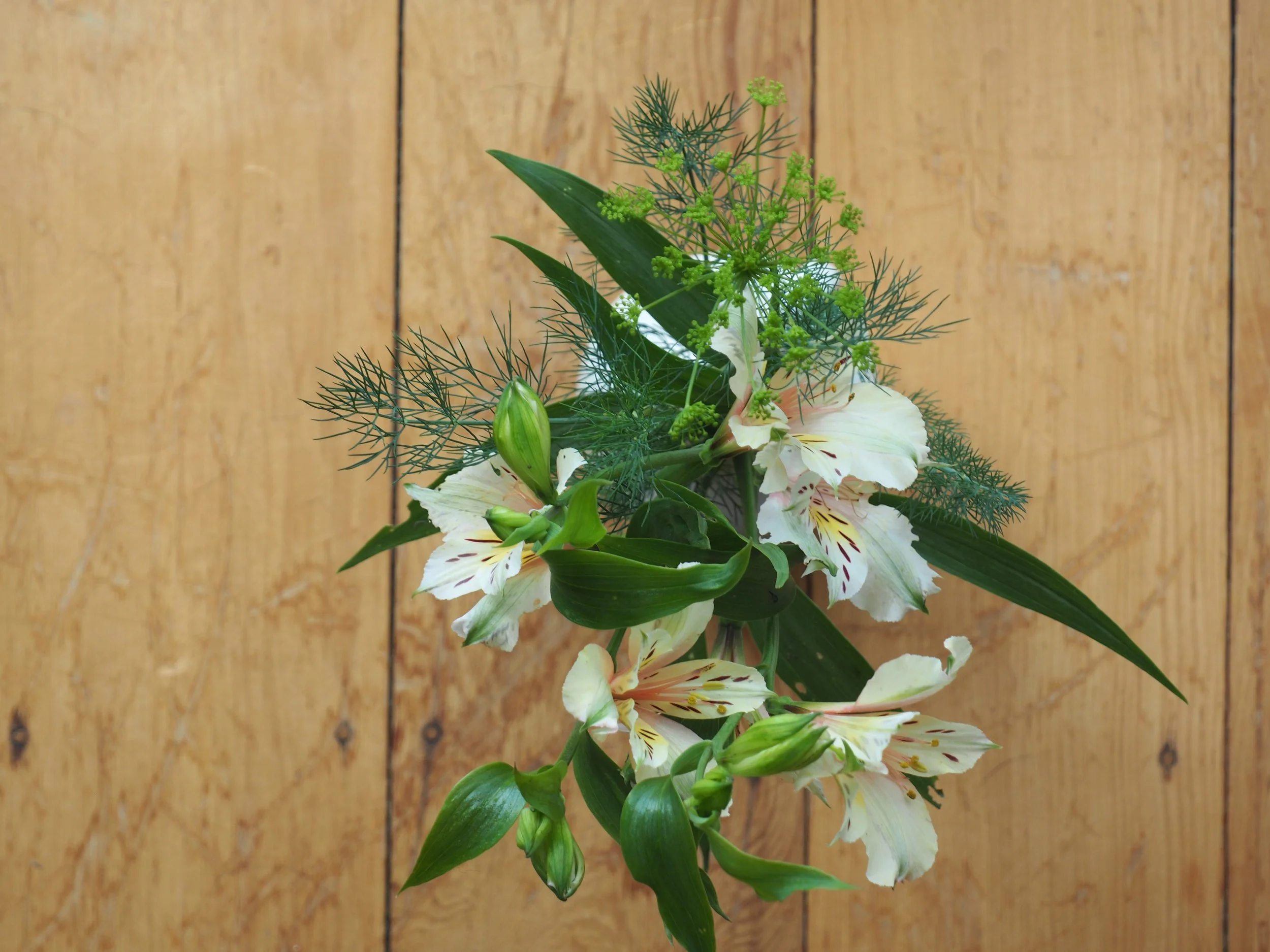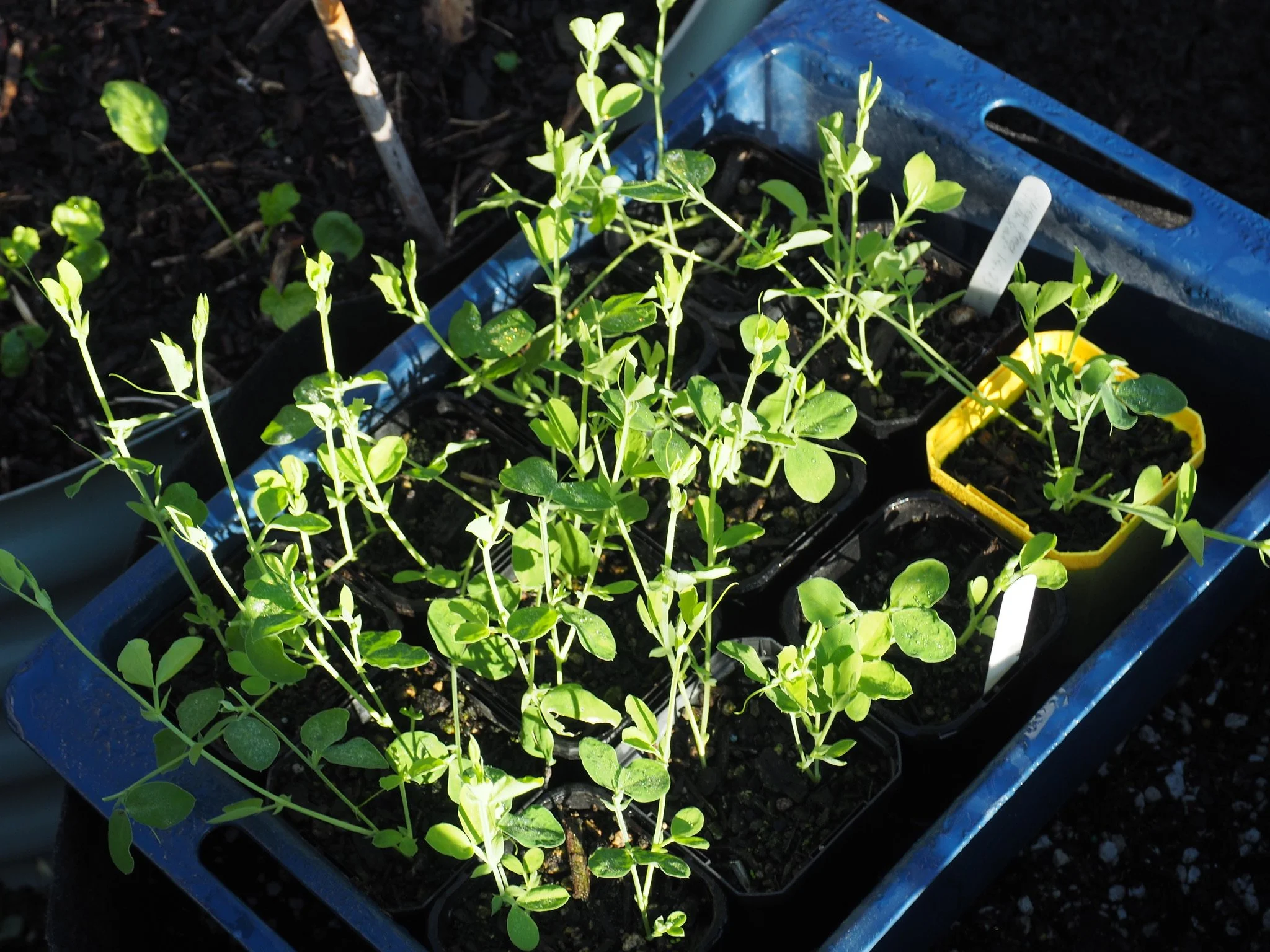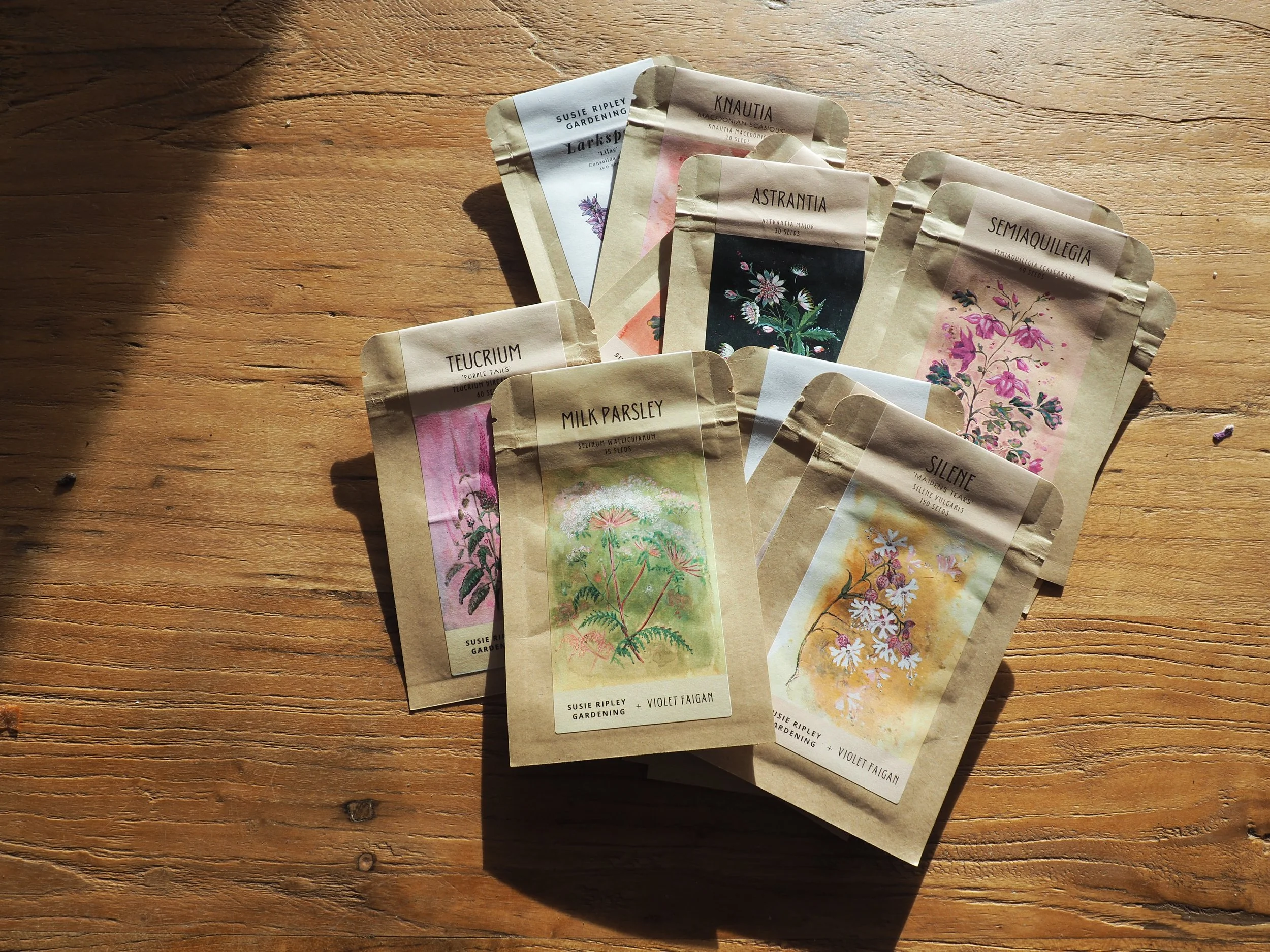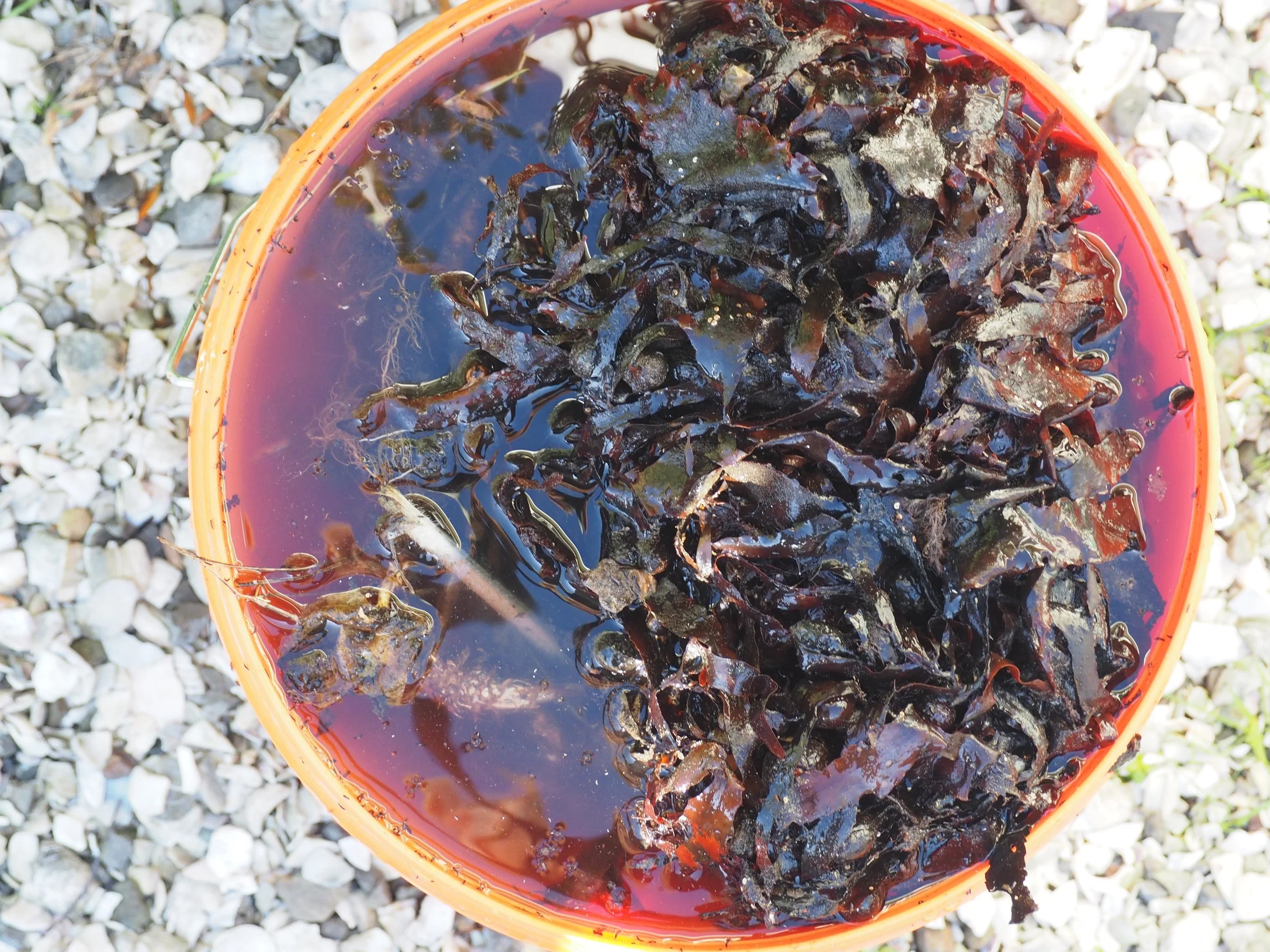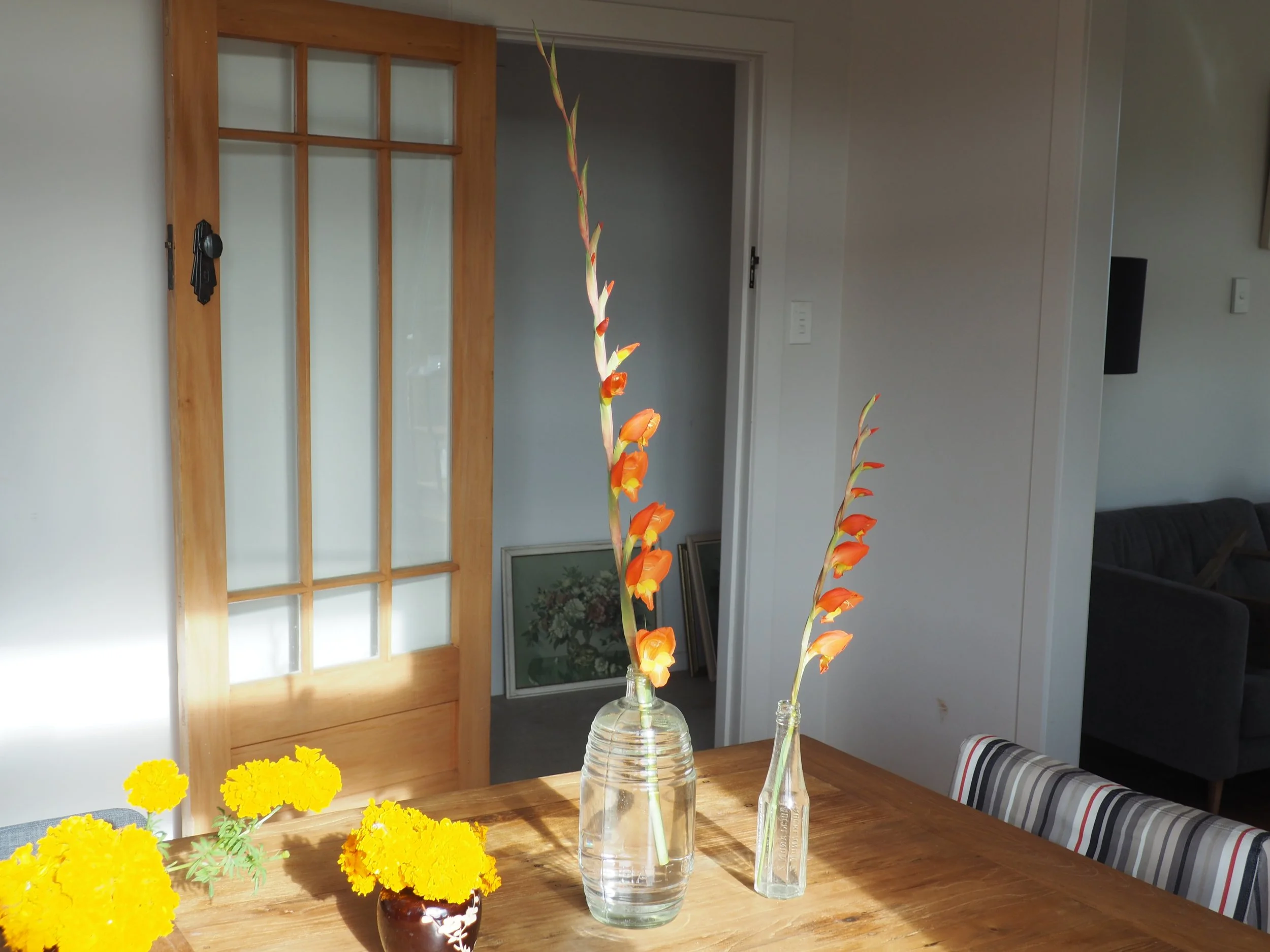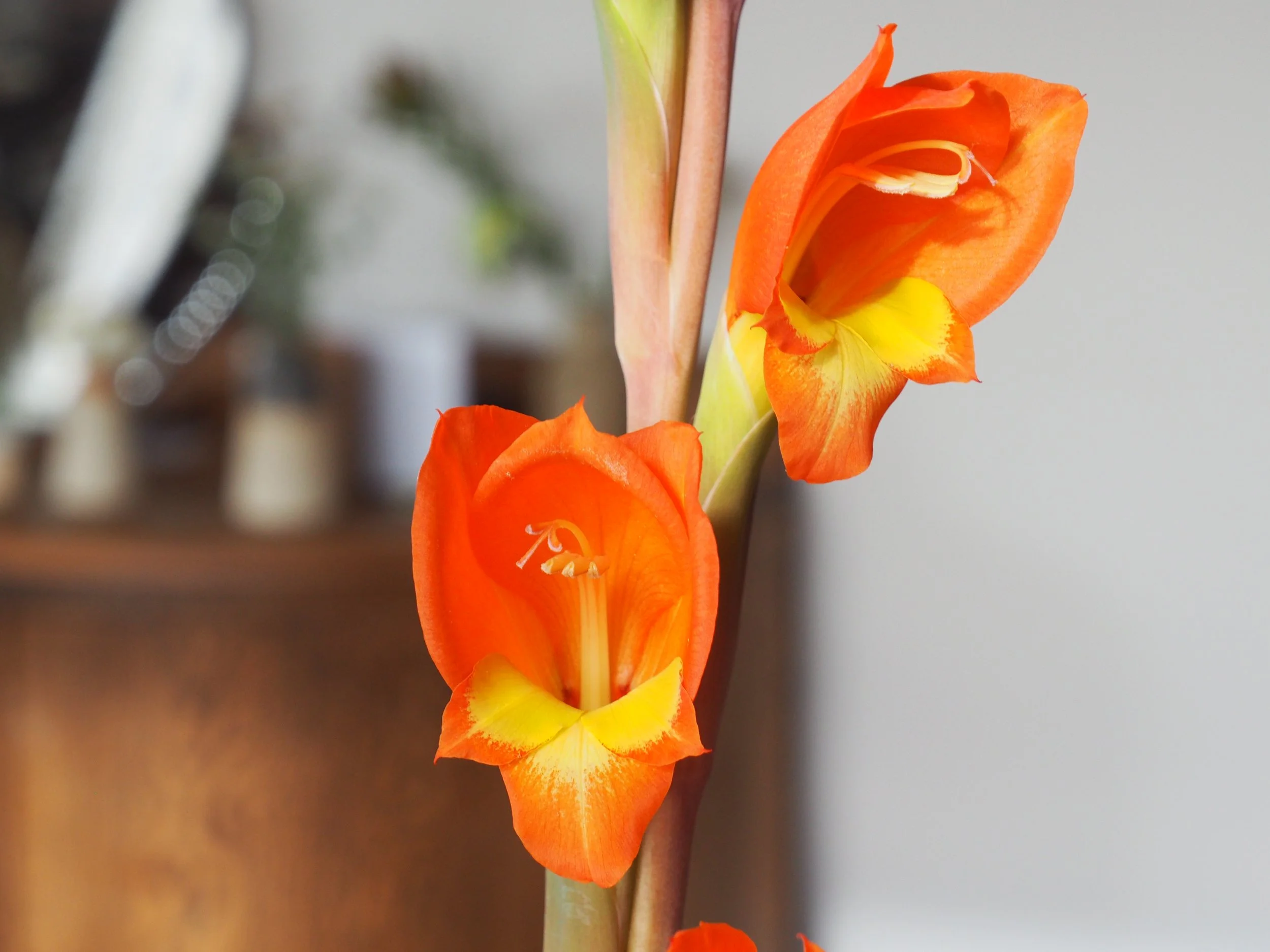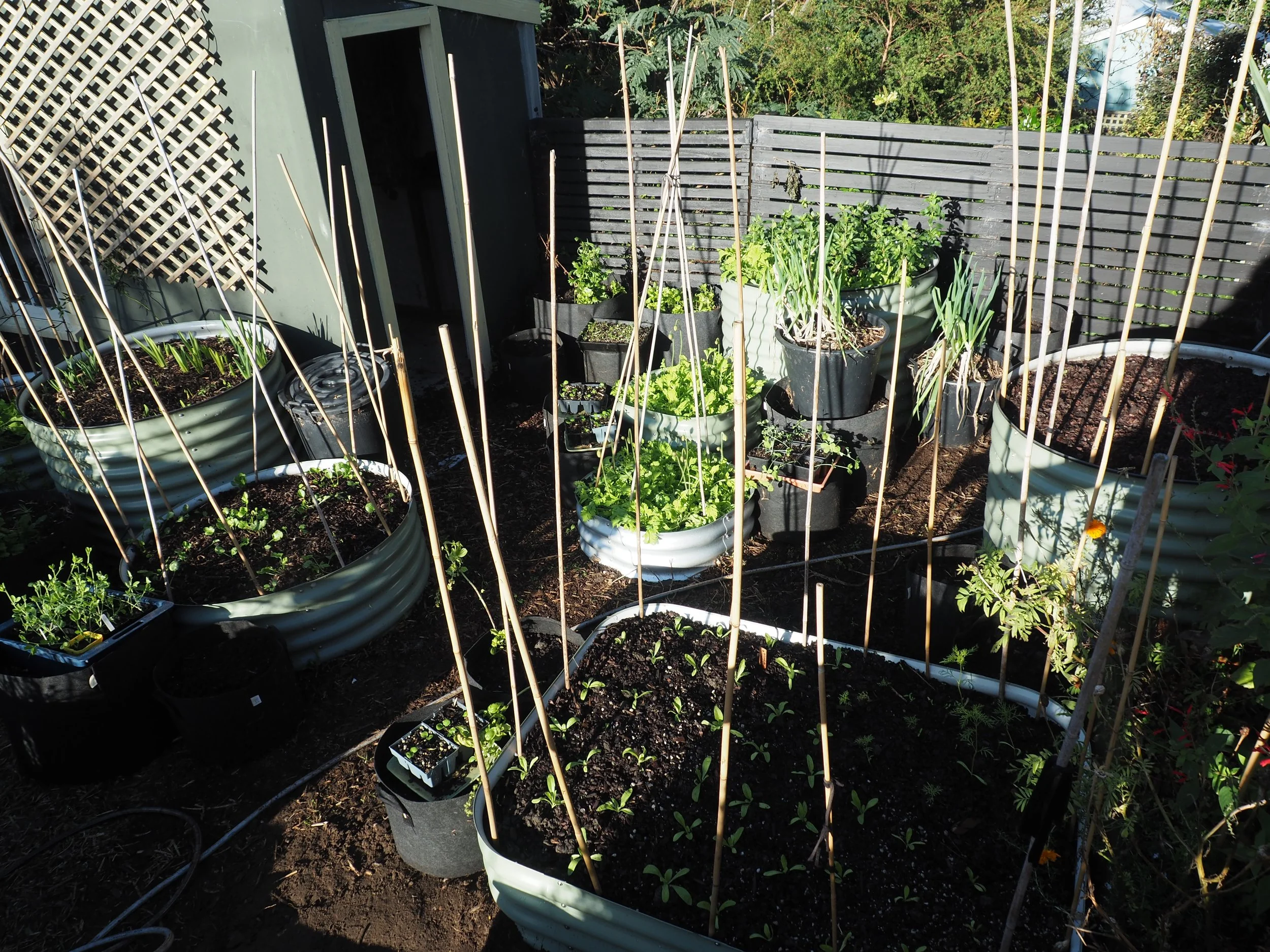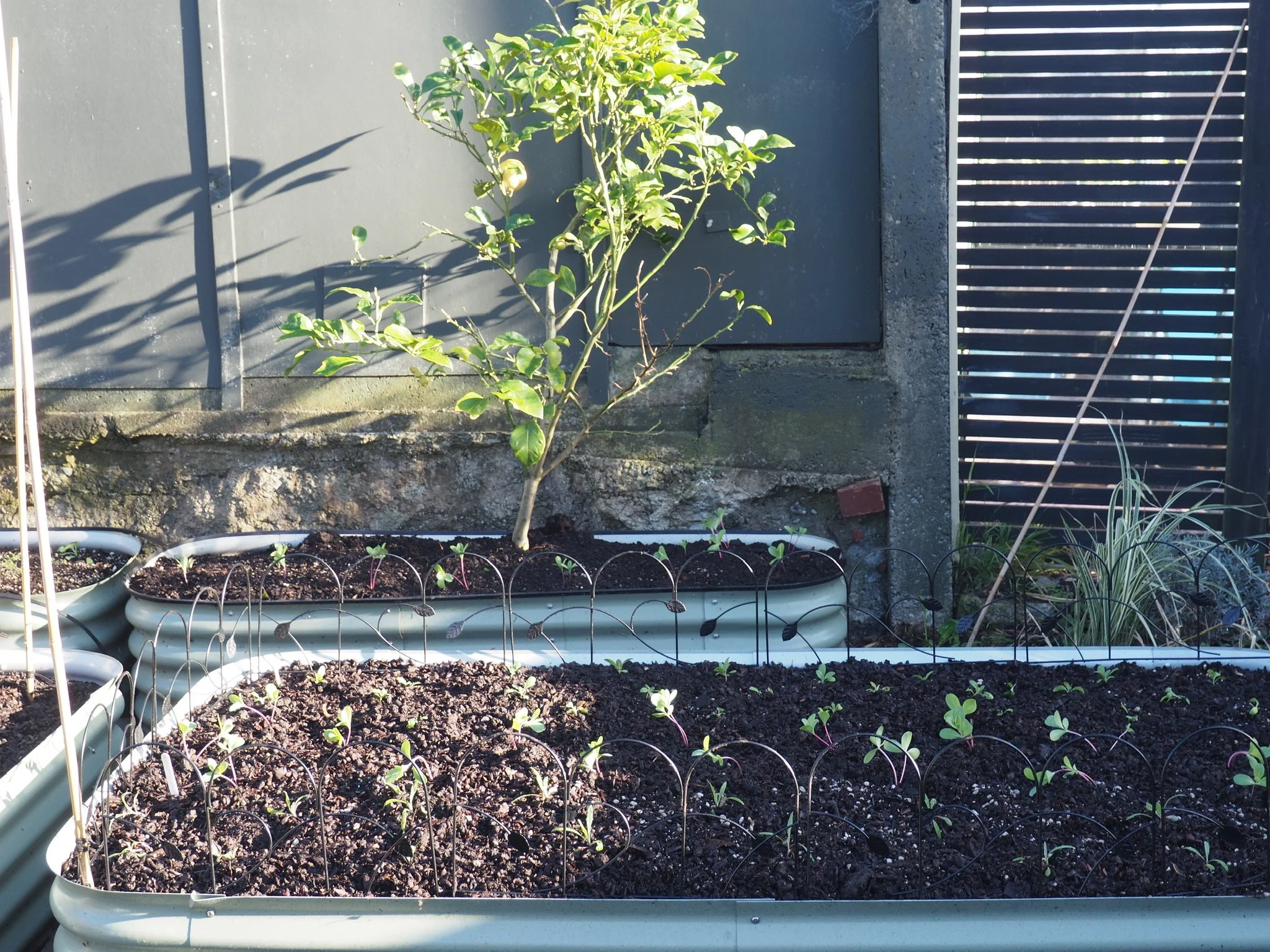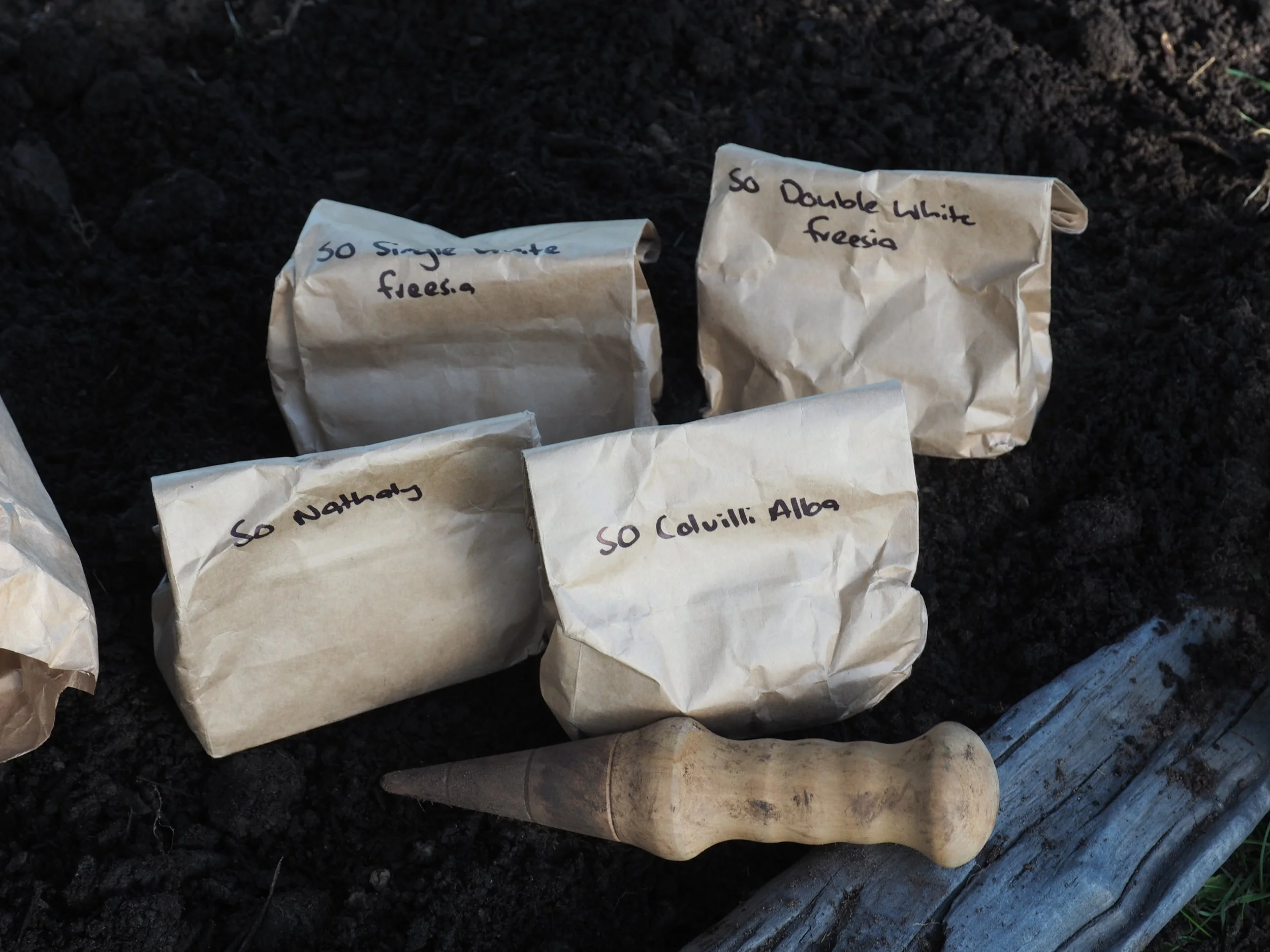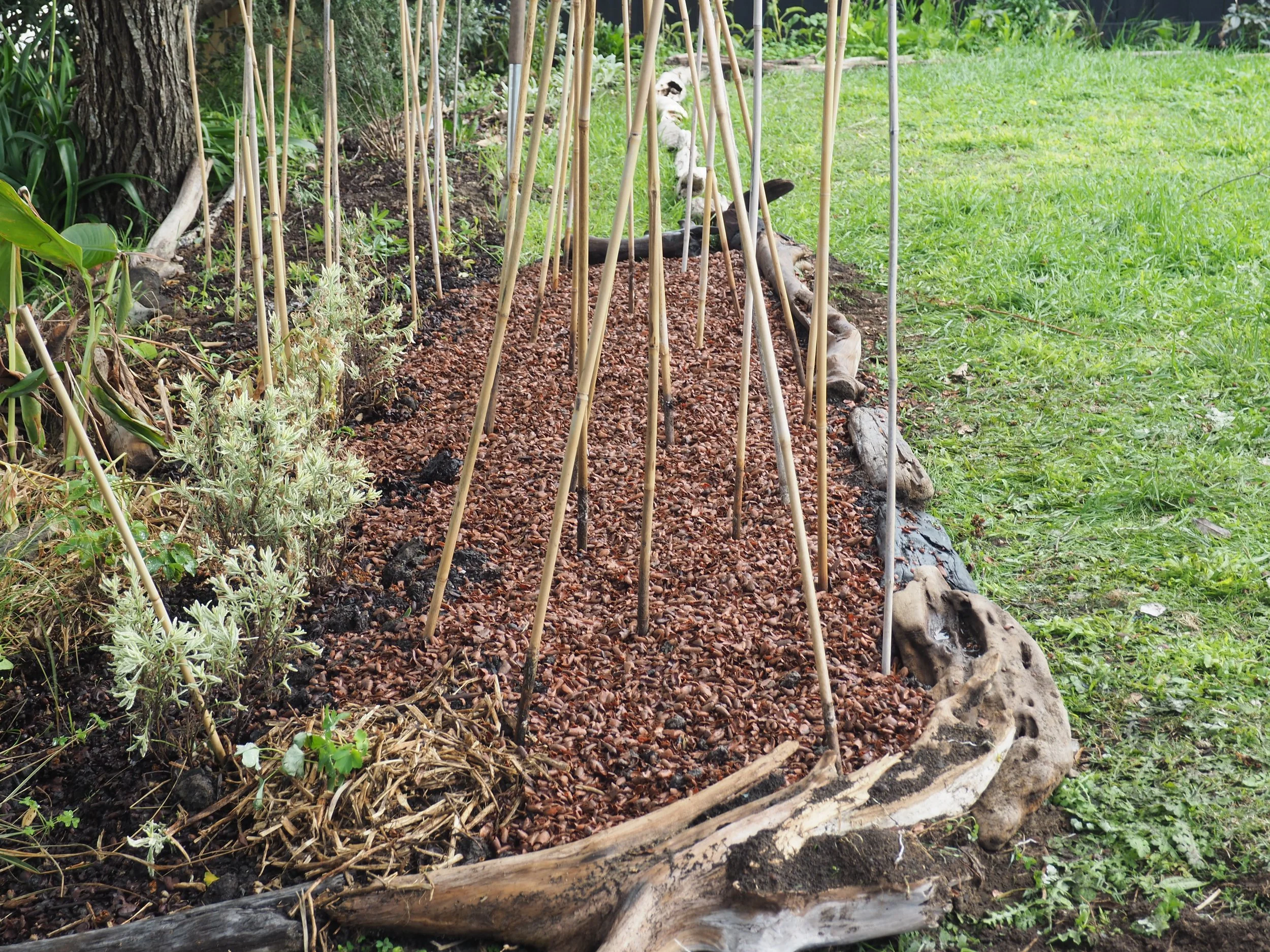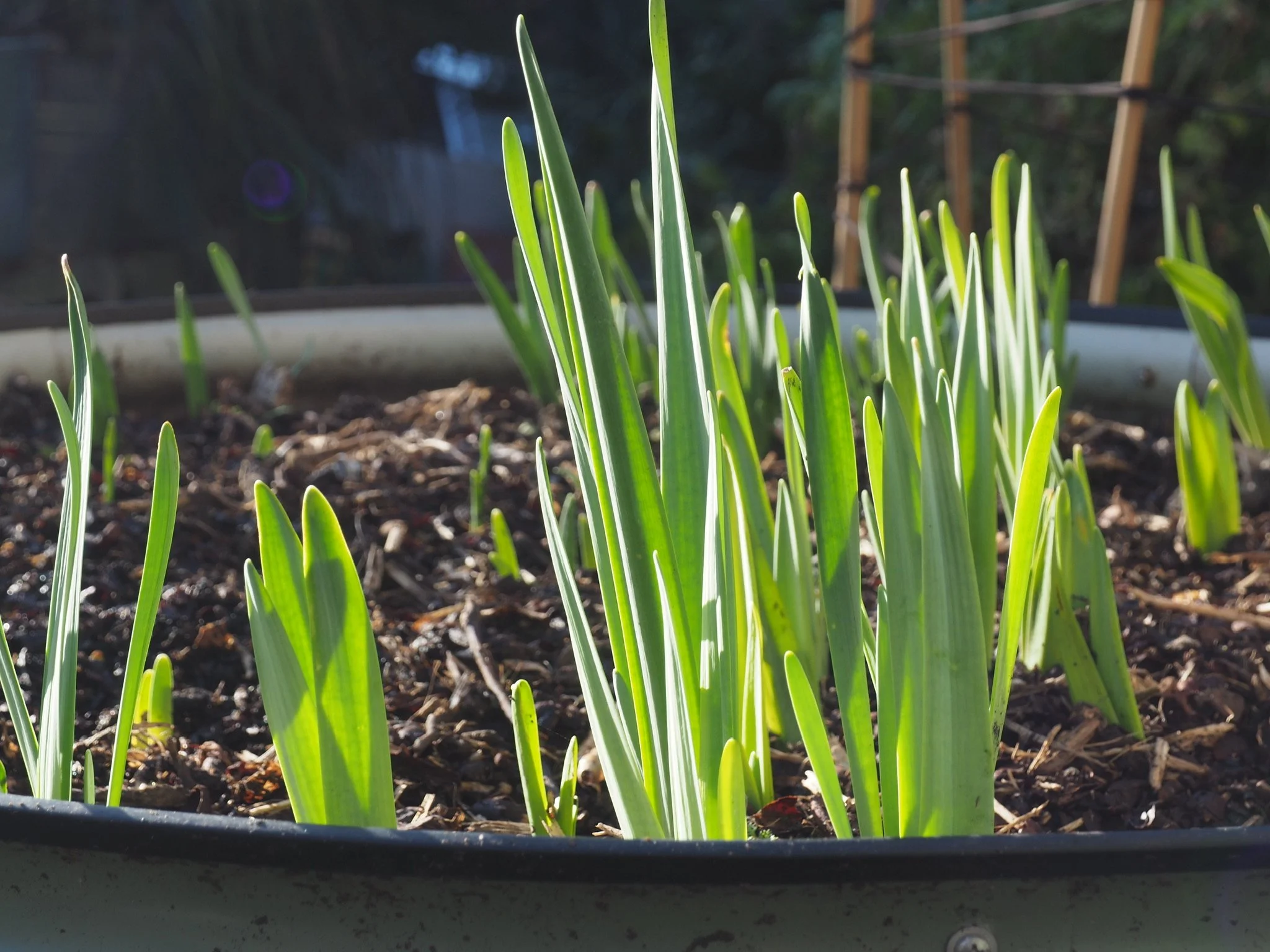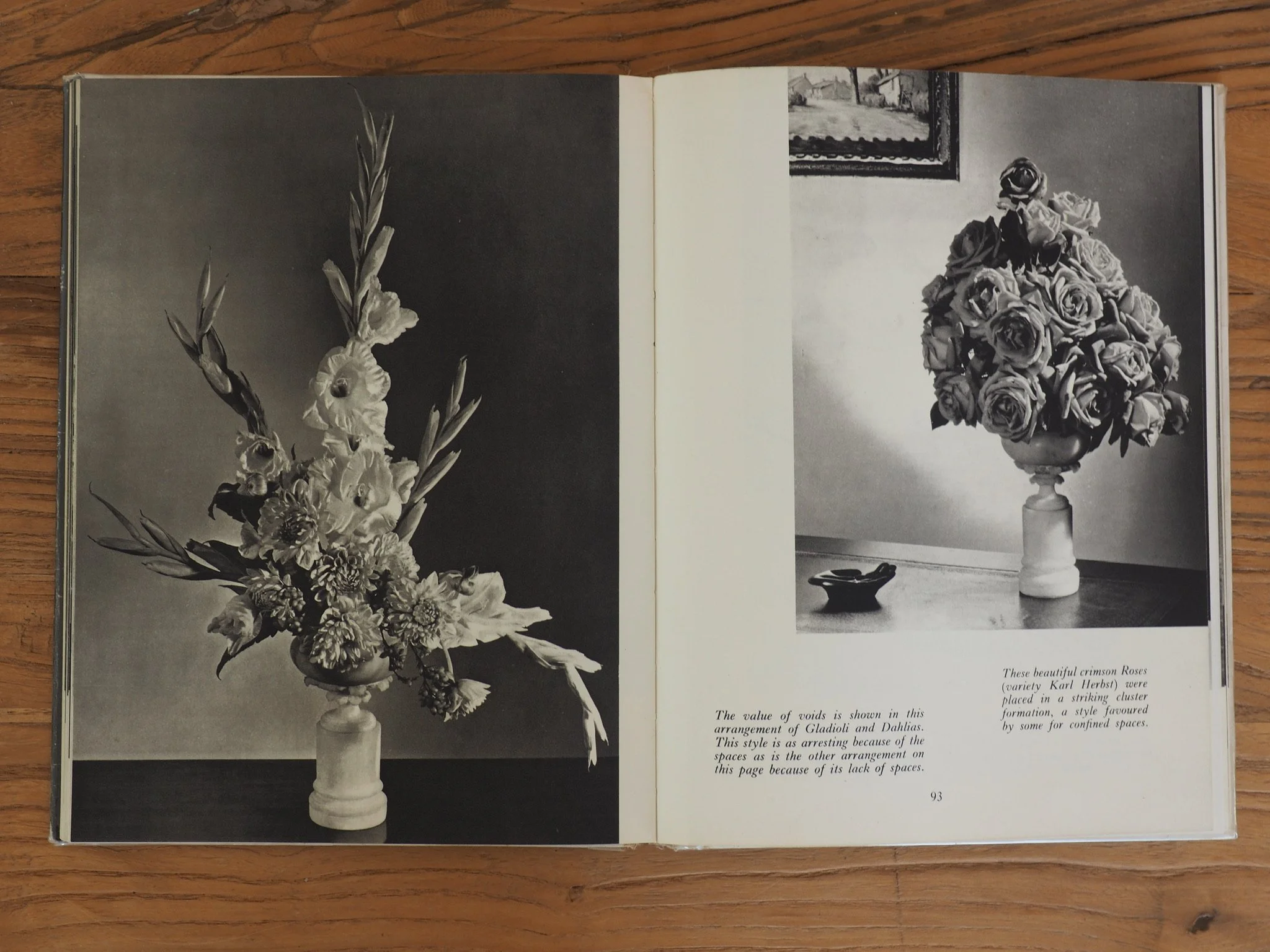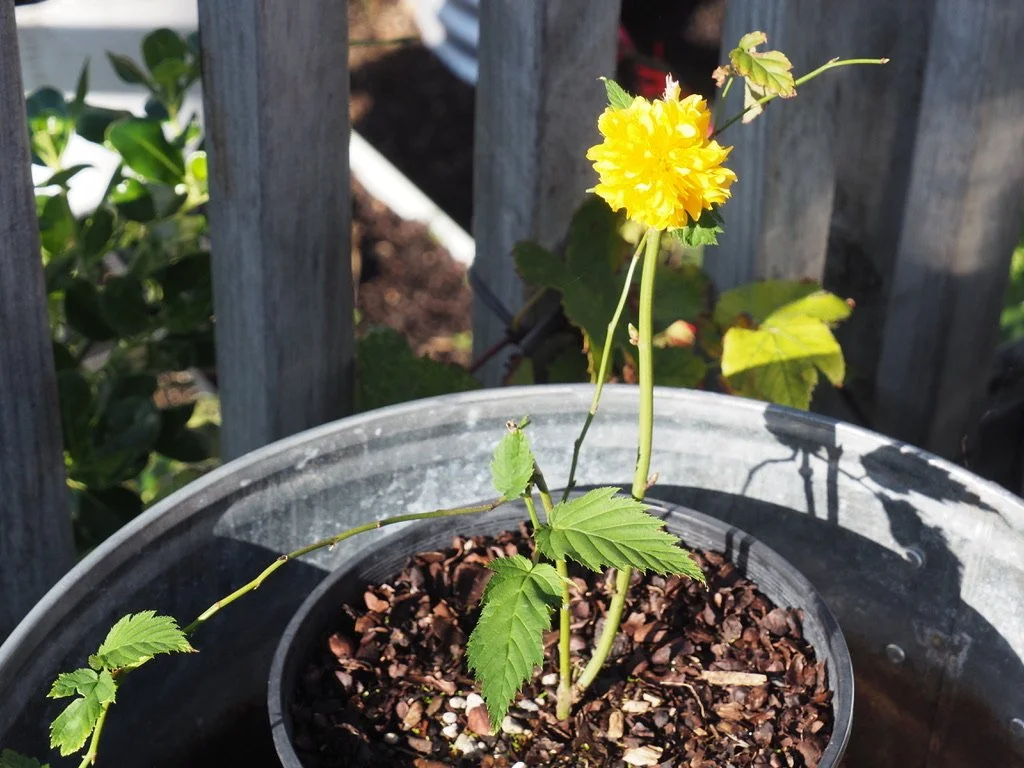Sweet Cicely has become a metaphor for something you want but can't find. Or something you find and didn’t know existed, only to find you can’t live without.
I got stung by a bee last Sunday. It wasn’t the bee’s fault. I haven’t been stung by a bee since I was kid running around barefoot. I have a large salvia bush that leans over the narrow path to the greenhouse. I have to brush against the bush to get there. A honeybee got a fright and stung my arm. Once winter arrives I’ll move the salvia to the front garden. I’ve discovered that this salvia makes a great cut flower if you pick it at the right time. The right time being before the flowers come out. The wrong time isn’t such a wrong time. You still get lovely long stems twisting in all sorts of interesting directions. You get a carpet of purple around the vase as the flowers drop off the stems.
Salvia and a bee.
I had big plans his week. And then I got another cold. No teaching and no gardening until the end of the week. I lay around blowing my nose and reading gardening books. I ordered some more seeds, bought a few more bulbs and tried to find sweet cicely. I trawled the internet and nowhere could I find it, either as a plant or a packet of seeds.
I read about sweet Cicely in my Sarah Raven book called ‘The Cutting Garden: Growing and Arranging Garden Flowers.’ She has pages and pages of information about great plants to use in flower bouquets. One was Alexanders, Smyrnium, an umbellifer with lime green bracts. I planted some from seed a few weeks ago, and finally it’s sprouted. I do love umbellifers, which is why I wanted to get hold of sweet cicely. It’s another of Sarah Raven’s favourites. As is dill.
I had one dill plant in the back garden over summer. I pulled it up when it died and now I have hundreds of seedlings all growing in strange places.
Dill and alstroemeria.
On Tuesday afternoon I was emptying the kitchen scrap bucket into the compost bin, which is a 70s invention called a rubbish bin composter (I just made that up). Anyway, its a metal rubbish bin with small holes drilled into the bottom and up the side (too small for rodents to squeeze through) and a third of it is buried into the soil (so worms and other good guys can get in and turn the food scraps into compost).
I was emptying the kitchen scrap bucket when I noticed that the cream alstroemeria (beside the compost bin) was flowering. It was also being smothered by a salvia bush (note to self to move the alstroemeria to a sunny spot away from bushes and snails). Opposite the alstroemeria was a small dill plant growing in a pot of thyme. It was flowering. The acid green of the umbels and the spring green of the leaves was so beautiful. I picked a sprig of dill and 2 stems of alstroemeria and put them on the ground while I replaced the lid on the compost bin.
An hour later I remembered the flowers, which were still on the ground, and fetched them. The dill had wilted. I followed Sarah Ravens advice with soft stemmed flowers and put the ends in boiling water for 20 seconds. Then I put the flowers in a vase of cold water. When I went to bed on Tuesday night the dill was still withered. I wasn’t holding out much hope. I’d obviously left it without water for too long.
When I woke on Wednesday morning the dill was standing upright and turgid (a word my friend Ali and I would chuckle over in Form 6 Bio).
Honeywort ready for planting.
My window is closing. It might’ve already shut. Then again it might not be closing at all. I really have no idea. I’m talking about the window for sowing hardy annuals, which you sow in autumn, and those other plants that aren’t hardy-annuals but you also sow in autumn or winter or both. Like I said, I have no bloody idea. It’s all one big experiment.
It helps to have lots of sources of information about seed growing. But it can also be confusing. And while I have a lot of books, none of my them can tell me what it’s like to grow seeds and seedlings in Paekakariki. So I have to take a leap of faith.
sweet peas.
I reckon I’ve sowed my sweet peas too early, especially as autumn (until Friday) has been unseasonably hot and humid. The reason for sowing sweet peas in autumn (on a window sill or in a greenhouse) is having warm enough temperatures for the seeds to germinate. Once they start to grow you’re supposed to put them in a cold frame outside in the cold. The cold then slows down the leaf growth and the plant focuses on root growth. If the outside temperature isn’t very cold then there’ll be too much leaf growth and not enough root growth (which is exactly what’s happening to my sweet peas - even though I pinched out their tips). I’ve decided to plant some of the sweet peas in the garden and see what happens.
The seeds I ordered this week.
I have too many packets of seeds. Too many hardy annuals to plant before winter. And yet I bought 17 more packets of seeds. Admittedly quite a few of them are perennials. And a good many will get planted in spring. But still, it’s ridiculous. I really don’t need this many packets of seeds. I can’t help myself.
Comfrey and seaweed tea.
I have two books by the wonderful Arthur Parkinson. He’s an expert at growing flowers in containers. He said that the best food for sweet peas is comfrey tea. That’s what I’ve made in the photo above. I pulled up lots of the comfrey plants that had gone AWOL in Karori, chopped them up and put them in a bucket. I threw in a bag of seaweed I’d collected from the beach. Then I filled the bucket with water and threw a lid on it. In a couple of weeks I’ll have a stinky brown tea which I can dilute with water and feed to the sweet peas. Now I think about it, I’ll hold off on feeding them. I don’t want them to grow any more than they have.
Last week I wrote about this mystery flower that appeared in different parts of the Paekekariki garden. I thought it was Watsonia. My neighbour reckoned it was gladiolus. Then my friend Ali sent me a photo of some gladiolus flowers in a vase. I’d given her the bulbs a couple of years back. It turns out they’re the same flower. The same orange flowers with the yellow throats. Gladiolus natalensis to be exact.
Yesterday I spent the day in the garden trying not to panic. There were so many jobs demanding my attention: weeding, garden making, bulb planting, seedling planting, seed sowing, dog-proofing, plant moving, pot moving, weeding, so much weeding, and mulching. And that’s only at the Paekakariki garden.
Here are some of the things I did or discovered this week;
Seeing the orange gladiolus growing so happily in the side and front garden gave me the confidence to grow a lot more bulbs in both places. Lots of bulbs clearly like growing in sand. That’s why I bought some freesias (white single and white double) and gladiolus nanus (2 different colours but can’t remember what they are).
There are lots of clivia’s growing on the bank under the pohutakawa trees in the front garden. I weeded around them and moved a couple of stray ones. Apparently they make a great cut flower. Clivia’s take a while to get established.
Centaruria ‘Sweet Sultans Mix’…. seedlings are very hard to pot up. They have very tender stems that snap easily.
Gladiolus makes a great cut flower.
The poppy seedlings I bought a while back are already about to flower.
The daffodil bulbs I planted at the same time as the poppies are pushing their sword-like leaves towards the sky.
I planted the sunflower seeds too early. They’re too tall for the cold frame. I’ll plant them and see what happens.
If I put a raised bed behind the greenhouse I can grow flowers that like a shady damp place. Some of my new seeds are damp loving plants, such as ravenswing and milk parsley.
Yesterday I planted out calendula, stock, cornflowers and honeywort in the raised garden beds. I’ve grown all of them from seed.
This morning (today being Sunday and Mothers Day) I started extending one of the beds in the front garden. I planted all of the freesias and one-third of the small gladiolus bulbs. I mulched and dog proofed it (sort of).
It’s important to check which way up a bulb goes into the ground. Don’t do what I did and guess. I planted half of the single freesias when I thought I better check. It turns out you plant them pointy-side up. I’d gone for pointy-side down (which you do with anemones). I had to pull out the bulbs and turn them the right way up.
It’s also important to work out how you want your bulbs to look in the garden if you’re planting a few different varieties together. After planting all the single freesia I decided I’d rather have a mix of singles and doubles together. This too involved a bit of jiggery-pokery to sort it out.
My friend Sophie gave me a bulb planter and its a joy to use. It makes bulb planting quick and accurate.
The extended garden whee the freesias and gladiolus are planted.
Daffodil leaves.
This plant below, which I bought from Grassroots Roses (when I bought a lot of roses) was an afterthought. It’s a close relation to the rose and I’d never heard of it. It’s started flowering and it really is a sweet cicely moment. it has a stunning golden flower and lovely shaped leaves.
Have a great week and see you next Sunday.
Kerria japonica.
